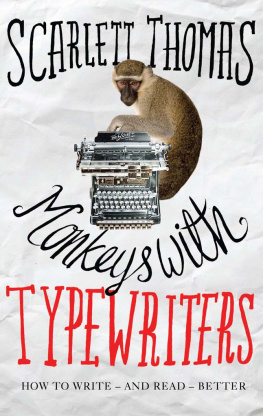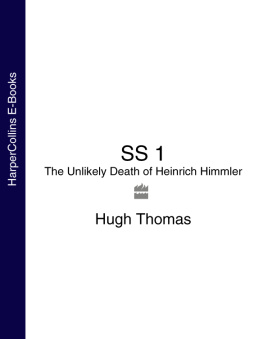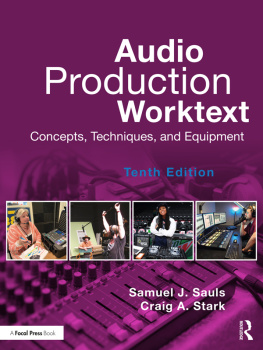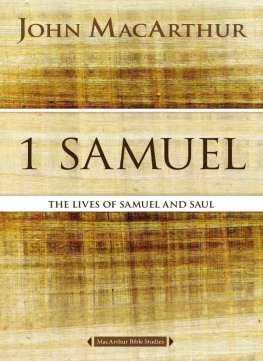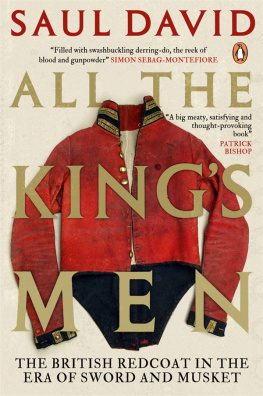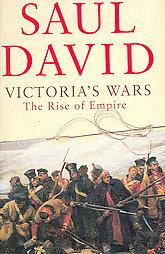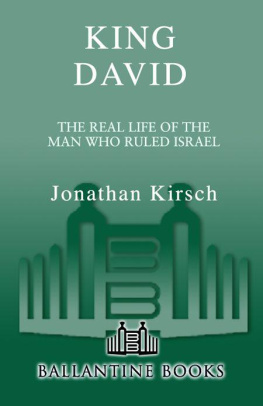HIDDEN IN PLAIN SIGHT 10
How To Program A Quantum Computer
Andrew Thomas studied physics in the James Clerk Maxwell Building in Edinburgh University, and received his doctorate from Swansea University in 1992.
His Hidden In Plain Sight series of books are science bestsellers.
ALSO BY ANDREW THOMAS
Hidden In Plain Sight
The simple link between relativity and quantum mechanics
Hidden In Plain Sight 2
The equation of the universe
Hidden In Plain Sight 3
The secret of time
Hidden In Plain Sight 4
The uncertain universe
Hidden In Plain Sight 5
Atom
Hidden In Plain Sight 6
Why three dimensions?
Hidden In Plain Sight 7
The fine-tuned universe
Hidden In Plain Sight 8
How to make an atomic bomb
Hidden In Plain Sight 9
The physics of consciousness
Hidden In Plain Sight 11
The logic of consciousness
HIDDEN IN PLAIN SIGHT 10
How To Program A Quantum Computer
Copyright 2018 Andrew D.H. Thomas
hiddeninplainsightbook@gmail.com
All rights reserved.
CONTENTS
PREFACE
The subject of quantum computing is receiving a lot of publicity at the moment, with many stories in the press about how it is going to revolutionise our lives, or break the world's encryption systems. However, most of these stories seem very short on hard facts about how quantum computing actually works. In fact, there seems to be a general lack of easy-to-understand technical information about quantum computing. Whereas there is plenty of complex technical material available.
This book is going to attempt to fill the gap. It will attempt to simplify the subject, clarifying the essential concepts, while still retaining sufficient technical depth.
If you ask in most IT departments about the latest programming languages, or the latest programming techniques, I am sure you would find plenty of programmers with excellent knowledge of the latest developments. However, if you ask about quantum computing, I suspect you would be met with blank stares. But these are the people who one day, hopefully are going to be using quantum computers. These are the target customers.
So this book is accessible, aimed at a general audience. But it is also aimed at those programmers and scientific researchers, people with experience of conventional computers who wish to gain knowledge and experience of quantum computing but do not wish to trawl through the extensive and complex literature. This book will explain the programming techniques which will likely be needed to write a quantum computing program to solve their particular problems.
Hopefully, this book can provide another step towards taking quantum computing into the mainstream.
No prior knowledge of quantum mechanics or computing is assumed. This book will take you on the entire journey, from explaining the fundamental postulates of quantum mechanics, then explaining the principles of quantum computing, and finally showing you how you can program a quantum algorithm on a real quantum computer, generously provided by IBM.
You will be working at the frontier of human knowledge, using arguably the most advanced technology which has ever been created. You will be performing complex calculations in a time-window which lasts just microseconds, using single elementary particles which are in two states at the same time, inside a refrigerator which is the coldest place in the entire universe. This is beyond the wildest science fiction.
Quantum computing and the development of quantum algorithms is still very much a work in progress. It is a journey into mystery, and no one knows where the destination will be. You can play a part in shaping that future.
Andrew Thomas
(hiddeninplainsightbook@gmail.com)
Swansea, UK
2018
THE THINKING MACHINE
In early 1943, Richard Feynman received a telephone call from Robert Oppenheimer. Feynman was a 25-year-old physicist, a rising star from Princeton University. Oppenheimer was the scientific director of the Manhattan Project, the American project to build the world's first atomic bomb. Oppenheimer persuaded Feynman to join his team and, on March 28 th 1943, Richard Feynman boarded a train to Los Alamos, New Mexico, where the centralised bomb development facility was located.
Feynman described his time at Los Alamos in his highly-entertaining autobiography Surely You're Joking, Mr. Feynman! He recalled arriving on-site to find the main buildings were still not fully complete, and so the physicists had to lend a hand in the construction work.
Feynman recalls how he attended the introductory lecture given by Robert Serber (which was described in my eighth book) in which the principles behind the atomic bomb were explained. For many of the physicists in attendance, this was the first time they were made aware of the true purpose of Los Alamos.
All of the correspondence in and out of Los Alamos was heavily-censored for fear of spies, and secrets leaking out. This presented a problem for Feynman whose wife, Arlene, was seriously ill with tuberculosis in hospital in Albuquerque. Feynman and Arlene arranged that they would write letters to each other in code. The key to deciphering the code would be written on a separate piece of paper inside the letter.
One day, Feynman received a letter from his wife which included the following key which was written on a separate piece of paper:
LITHARGE
GLYCERINE
HOT DOGS
LAUNDRY
Feynman puzzled over the letter for many hours, unable to decipher it by using the enclosed key. It was only when he arrived at Arlene's hospital a few days later that she told him it was actually a shopping list of things she had wanted him to bring when he visited her.
In another famous anecdote, Feynman is sent on a trip from Los Alamos to inspect the giant uranium enrichment plant at Oak Ridge (also described in my eighth book). When he arrives, his reputation as a genius precedes him, and so the team at Oak Ridge unroll a series of plant blueprint diagrams for Feynman's analysis and approval. However, Feynman has never seen anything like this in his life: "I'm completely dazed. Worse, I don't know what the symbols on the blueprint mean! There is some kind of a thing that at first I think is a window. It's a square with a little cross in the middle, all over the damn place. I think it's a window, but no, it can't be a window, because it isn't always at the edge. What am I going to do? I get an idea. Maybe it's a valve. I take my finger and I put it down on one of the mysterious little crosses in the middle of one of the blueprints on page three, and I say 'What happens if this valve gets stuck?' figuring they're going to say 'That's not a valve, sir, that's a window.' So one looks at the other and says, 'Well, if that valve gets stuck ' and he goes up and down on the blueprint, the other guy goes up and down, back and forth, and they both look at each other. They turn around to me and they open their mouths like astonished fish and say 'You're absolutely right, sir!' So they rolled up the blueprints and away they went and we walked out. And Mr. Zumwalt, who had been following me all the way through, said: 'You're a genius.'"


